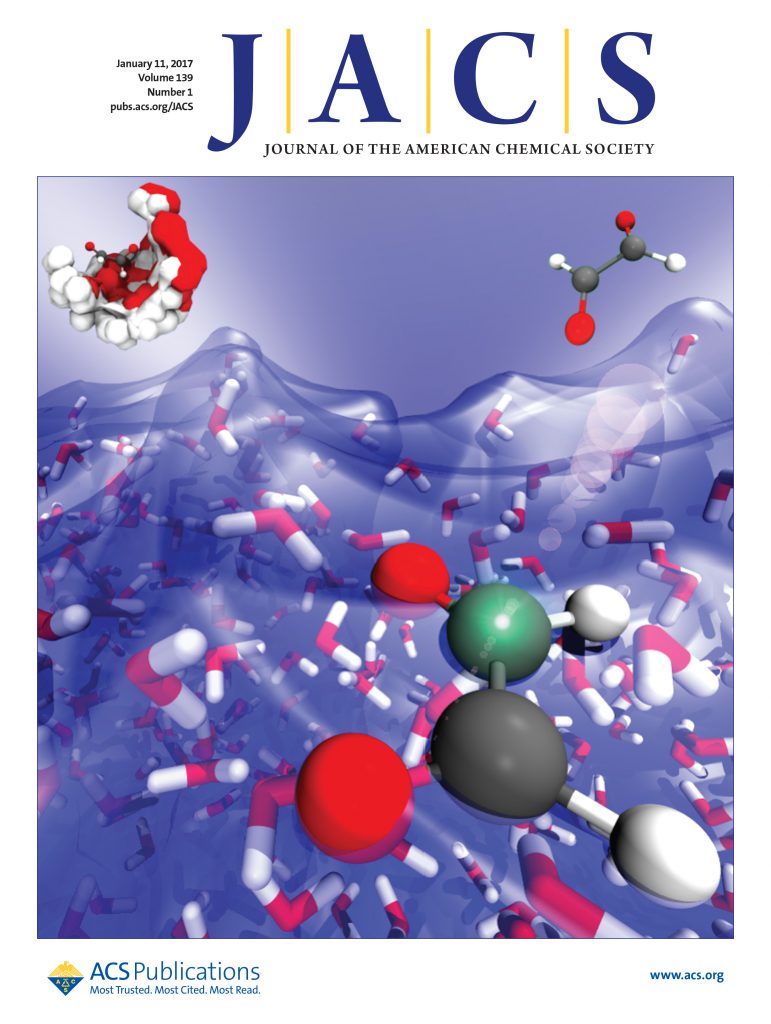Hydroxylated Boron Crystal Domain-Modulated Heterostructure Carbon Catalysts for Efficient Hydrogen Peroxide Generation
IF 15.6
1区 化学
Q1 CHEMISTRY, MULTIDISCIPLINARY
引用次数: 0
Abstract
Metal-free heterostructure carbon catalysts are promising alternatives to metal-based catalysts for electrochemical hydrogen peroxide (H2O2) synthesis via the two-electron oxygen reduction reaction (2e– ORR). However, one appropriate nanocrystal type is being sought to resolve a concern at industrial-level current densities. Herein, nano boron crystal domains (Bn) overcame the stability limitations of traditional carbon-based electrocatalysts for sustainable H2O2 production and industrial application. A Bn–C catalyst offered multiple active sites, while the nano Bn imparted an O2 enrichment effect enhancing mass transfer during ORR electrocatalysis. The Bn–C exhibited a very high mass activity (11.6/10.7 mol gcat–1 h–1) in alkaline/neutral electrolytes and showed negligible loss in activity and Faradaic efficiency (over 90%) during 100 h continuous electrolysis at high current density (>300 mA cm–2). Density functional theory and in situ Raman experiments demonstrated that the –OH groups connecting nano Bn provided an inductive effect on B atoms in the carbon matrix, alleviating a binding strength that is too strong with *OOH intermediate.

羟基化硼晶体域调制异质结构碳催化剂高效过氧化氢生成
无金属异质结构碳催化剂有望取代金属基催化剂,通过双电子氧还原反应(2e - ORR)合成过氧化氢(H2O2)。然而,一种合适的纳米晶体类型正在寻求解决工业水平电流密度的问题。纳米硼晶体域(Bn)克服了传统碳基电催化剂的稳定性限制,实现了H2O2的可持续生产和工业应用。Bn - c催化剂提供了多个活性位点,而纳米Bn赋予O2富集效应,增强了ORR电催化过程中的传质。Bn-C在碱性/中性电解质中表现出非常高的质量活性(11.6/10.7 mol gcat-1 h - 1),在高电流密度(>300 mA cm-2)下连续电解100 h,活性和法拉第效率的损失可以忽略不计(超过90%)。密度泛函理论和原位拉曼实验表明,连接纳米Bn的-OH基团对碳基体中的B原子产生了感应效应,减轻了*OOH中间体的结合强度过强。
本文章由计算机程序翻译,如有差异,请以英文原文为准。
求助全文
约1分钟内获得全文
求助全文
来源期刊
CiteScore
24.40
自引率
6.00%
发文量
2398
审稿时长
1.6 months
期刊介绍:
The flagship journal of the American Chemical Society, known as the Journal of the American Chemical Society (JACS), has been a prestigious publication since its establishment in 1879. It holds a preeminent position in the field of chemistry and related interdisciplinary sciences. JACS is committed to disseminating cutting-edge research papers, covering a wide range of topics, and encompasses approximately 19,000 pages of Articles, Communications, and Perspectives annually. With a weekly publication frequency, JACS plays a vital role in advancing the field of chemistry by providing essential research.

 求助内容:
求助内容: 应助结果提醒方式:
应助结果提醒方式:


